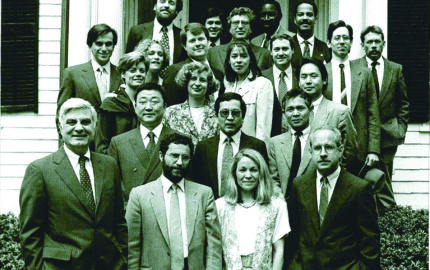It has been two years now since 25 journalists gathered in the library room at the Faculty Club at Harvard University, brought together by their concerns about the impact on journalism of the twin pressures of a communications technology revolution and the economic organization of the news business it had spawned. “The problem is that journalists see journalism disappearing inside the larger world of communications,” is how one member, Jim Carey of the Columbia University School of Journalism, summed up the meeting. “What they yearn to do is recover journalism from that larger world.”
In the end the group decided to try to engage other journalists and the public in an extended and carefully plotted examination of what journalism was supposed to be. To begin that process they drafted a letter including their own statement of concern and signed it, “The Committee of Concerned Journalists.” The letter and statement were distributed to friends in August 1997. Within two weeks, 500 journalists, including many Nieman Fellows, had signed the statement.
Since then the Committee has developed an extraordinary amount of original research on the culture of journalism. It has hosted an unprecedented series of 21 forums of print and broadcast journalists throughout the country. More than 300 journalists have discussed and debated the condition and standards of journalism. These forums are the most systematic, sustained and comprehensive examination ever conducted by journalists themselves about their profession and its responsibilities.
Other examinations conducted by the Committee include:
- A landmark survey of journalists Looking Inside the Business of Journalism Economic Pressures Create New Challenges for Journalists about their professional values.
- More than 100 three-and-one-half hour interviews with individual journalists exploring topics such as their goals and values. Sociologists working with the Committee did the interviews.
- A summit meeting of First Amendment and legal and journalism scholars to explore recent trends in First Amendment law.
- A major study examining where the journalistic line between fact and fiction is and should be.
The two major papers in this issue comprise the Committee’s assessment of the impact of economic pressures on journalism and how they have affected and altered the practice of journalism. As with any change of the magnitude that has swept over journalism during the past two decades, there is no single cause and no individual to blame. A clear sense emerges, however, that the causes of much of the change and many of the consequences have been, as Shakespeare wrote, “not in our stars but in ourselves.”
Choices were made and questions about them can be raised, as we did in commissioning these studies. Why, for example, when entirely new options were opening for traditional newspaper advertisers, did papers insist on ratcheting up ad rates in order to sustain specific profit margins even as a strategy of demographically selective circulation was pushing readership down? And why did newspapers choose to meet the competition of television by becoming more entertaining in the selection and presentation of news even when this new approach alienated their core readership? From the evidence in hand, it seems clear that these were carefully considered decisions, and they helped to shrink the business.
More curious still is, why has television news done similar things to itself? By choosing to focus on generating large profits on low-cost production, the broadcast networks have substituted news features for news reports. They did so because of an economic need to compete with their own more costly entertainment divisions and, in the process, they sacrificed depth and quality in hard news for increasing hours of softer, more entertaining features. The result is newsmagazine shows that, like many front pages of newspapers today, avoid coverage of social or political policy, public or foreign affairs.
The patterns are eerily similar. Broadcast television reacted to the emergence of cable television in much the same way newspapers reacted to the arrival of broadcast television. They chose to make their news more entertaining, virtually inviting their audience to go elsewhere for more news and public affairs. Not very surprisingly, the results have been much the same: their audience shrinks.
Clearly one of the major challenges journalists confront is how to preserve the high standards they attach to their job of gathering and conveying the news while they work in environments in which economic pressures threaten to lessen the quality of what they are able to do. But as in any era of rapid change, the better the dynamics driving the changes are understood, the more effective those affected by them will be at responding. This is why we, as journalists, set out to examine this in depth and publish our findings.
Bill Kovach is Curator of the Nieman Foundation and Publisher of Nieman Reports.



